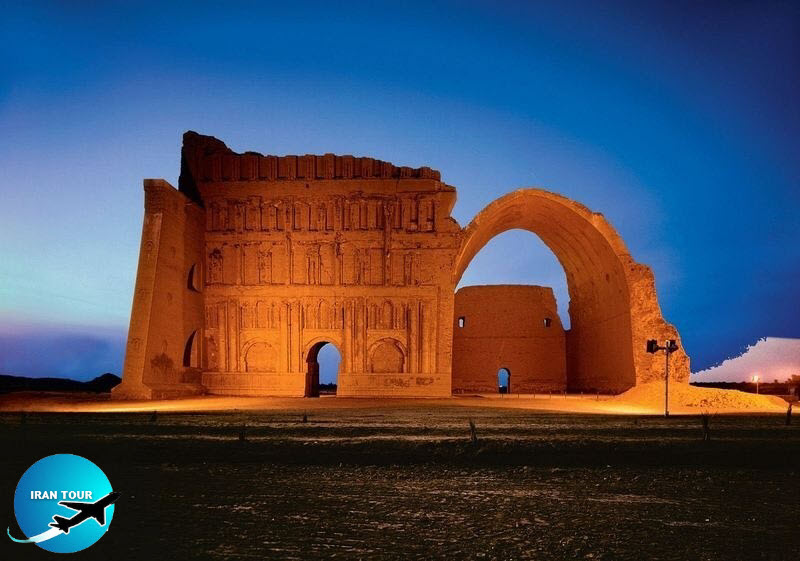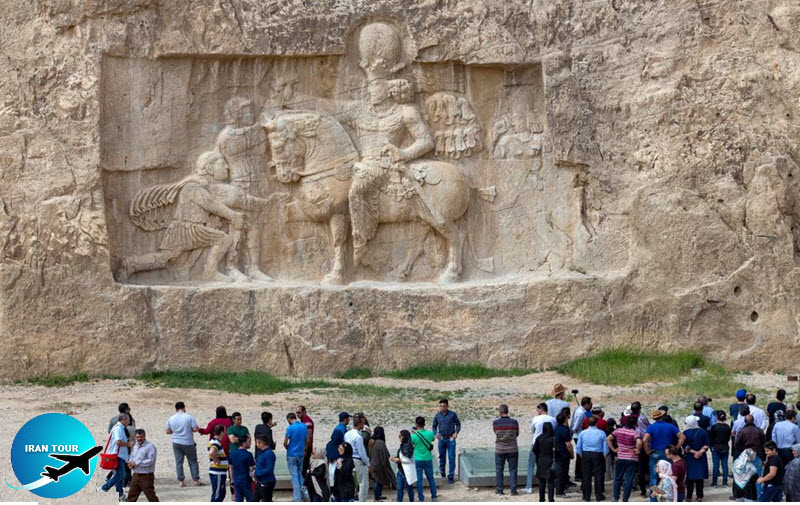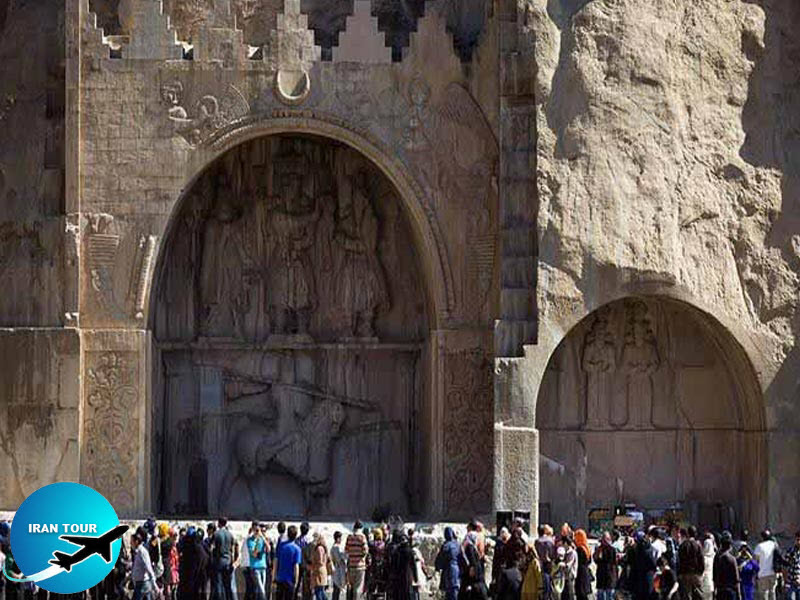Copyright 2020 - 2021 irantour.tours all right reserved
Designed by Behsazanhost
The Sassanid Empire
The Sassanid Empire
Sassanid rule or Sassanid Empire was the strongest independent Iranian Empire after the Achaemenids dynasty. The Sassanids founded an empire inside the borders that were made by the Achaemenids, with the capital at Ctesiphon. They deliberately and cleverly developed the Achaemenid culture in Iran and tried to erase Greek cultural influence. The Sassanids, with a significant focus on long-term urban planning, agricultural development, and attention to trade and technological advances, presented a new way of civilization.
 |
| Tāq Kasrā, also transcribed as Taq-i Kisra, Taq-e Kesra, meaning Iwan of Khosrow, are names given to the remains of a Persian monument dating back to the 3rd and 6th centuries, dating from the Sasanian era, which is sometimes called the Ctesiphon arcade. |
The Sassanid rulers adopted the title of shahanshah (king of kings), as rulers of many small rulers, called Shahriar. They introduced a new category of urbanization.
In this social category, people were divided into different classes. This classification consists of four groups: priests, warriors, secretaries, and commoners.
The entry of people from one class to the other one was very difficult and impossible. The Sassanid rule and the system of social stratification were reinforced by Zoroastrianism, which became the state religion.
 |
| Takht-e Soleymān, also known as the Fire Temple Azar Goshnasp, literally "warrior fire", is an archaeological site in western Azarbaijan, from the Sasanian Empire. It is located halfway between Urmia and Hamadan, near the present-day city of Takab, and 400 km west of Tehran. |
The Zoroastrian leadership or priesthood or Mobedan became immensely powerful. The head of the priestly class, or the leader of mobads, as well as the commander of the army, the Iran
Shapur II (led between 309 and 379 CE), however, reconquered the lost territories in three successive wars with the Romans. Khosro I (531-579), also known as righteous
 |
| Shapur I's inscription at Naqsh-e Rostam, 3 kilometers away from the north of Takht-e Jamshid. This inscription depicts a famous scene in which the Roman Emperor, Valerian, is kneeled before Shapur I and asking for grace. Shapur defeated Valerian at the Battle of Edessa, in which the entire Roman army was destroyed and Valerian itself became Shapour's prisoner. |
He built strong fortifications at the crossings and placed dependent tribes in carefully chosen towns at the borders so that they could act as guardians of the state against the invaders. Justinian paid him 440,000 gold coins as a bribe to keep the peace, but he seems to have been a man who really benefited from the fruits of peace and found no reason to pursue a senseless war. He had believed to all religions, although he commands that Zoroastrianism should be the official religion of the state, he was not unduly disturbed when one of his sons became a Christian. Under his auspices, many books were imported from India and translated into Pahlavi. Some of them later found themselves in the literature of the Islamic world.
The reign of Khosro II (591-628 CE) was characterized by the useless splendor and sumptuousness of the court. Towards the end of his reign, the power of Khosro II declined. In the resumption of fighting with the Byzantines, he knew the first successes, captured Damascus, and took the Holy Cross in Jerusalem. But counter-attacks by the Byzantine Emperor Heraclius lead enemy forces deep into Sassanid territory. In the spring of 633, a grandson of Khosro named Yezdegerd ascended the throne and that same year, the first Arab squadrons made their first raids on Persian territory.
 |
| Taq-e Bostan means "ark of the garden" or "stone arch" is a site presenting a series of large rocky reliefs from the time of the Sassanid empire of Persia (Iran), carved around the 4th century AD. This example of Sassanian Persian art is located 5 km from Kermanshah city center. |
Years of war have exhausted Byzantines and Iranians. The remaining Sassanids were further weakened by economic decline, heavy taxes, religious unrest, rigid social stratification, the growing power of provincial landowners, and the rapid renewal of leadership. These factors facilitated the Arab invasion in the seventh century.
It was the beginning of the end. Yazdegerd was a boy, at the mercy of his advisers, unable to unite or control the vast country that collapsed into a number of small feudal kingdoms. Rome is no longer threatened. The threat came from the disciplined small armies of Khalid ibn Walid, who was one of Muhammad's companions in arms and who, after the death of the Prophet, was at the head of the Arab army.
Sassanid Kings:
| Ardashir I | 224 - 241 CE |
| Shapur I | 241 - 272 CE |
| Hormoz I | 272 - 273 CE |
| Bahram I | 273 - 276 CE |
| Bahram II | 276 - 293 CE |
| Bahram III | 293 - 293 CE |
| Narseh | 293 - 302 CE |
| 302 - 309 CE | |
| Shapur II | 309 - 379 CE |
| Ardashir II | 379 - 383 CE |
| Shapur III | 383 - 388 CE |
| Bahram IV | 388 - 399 CE |
| Yazdgerd I | 399 - 420 CE |
| Bahram V | 420 - 438 CE |
| Yazdgerd II | 438 - 457 CE |
| Hormoz III | 457 - 459 CE |
| Peroz | 459 - 484 CE |
| Balash | 459 - 484 CE |
| Kaveh I (first reign) | 484 - 488 CE |
| Zamasp | 488 - 496 CE |
| Kaveh I (second reign) | 496 - 498 CE |
| Khosro I, Anoushirvan | 498 - 531 CE |
| Hormoz IV | 531 - 579 CE |
| Bahram VI, |
579 - 590 CE |
| Khosro II, Parviz | 590 - 590 CE |
| Kaveh II | 590 - 628 CE |
| Ardashir III | 628 - 628 CE |
| Shahrvaraz | 628 - 629 CE |
| Porandokht | 629 - 630 CE |
| Hormoz V | 630 - 632 CE |
| Yazdgerd III | 632 - 651 CE |
- Details
- Category: IRAN Blog